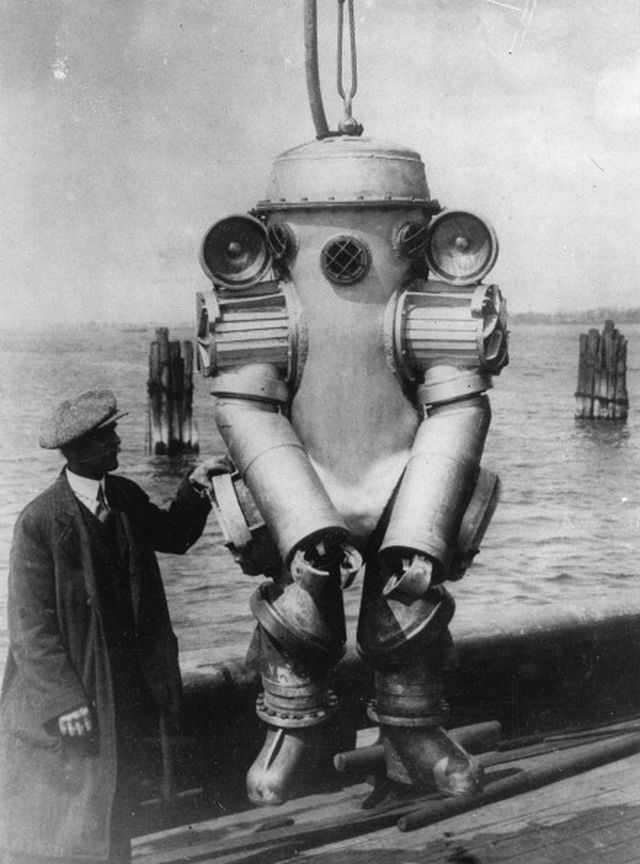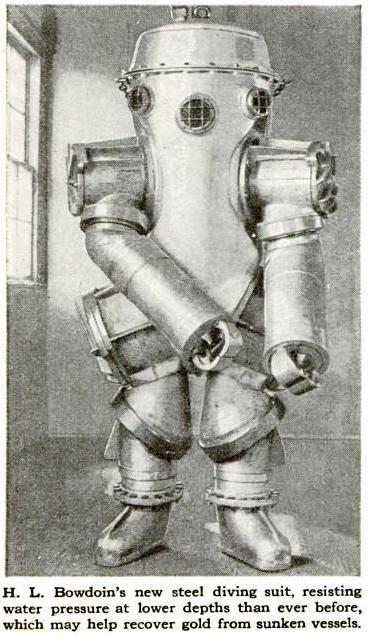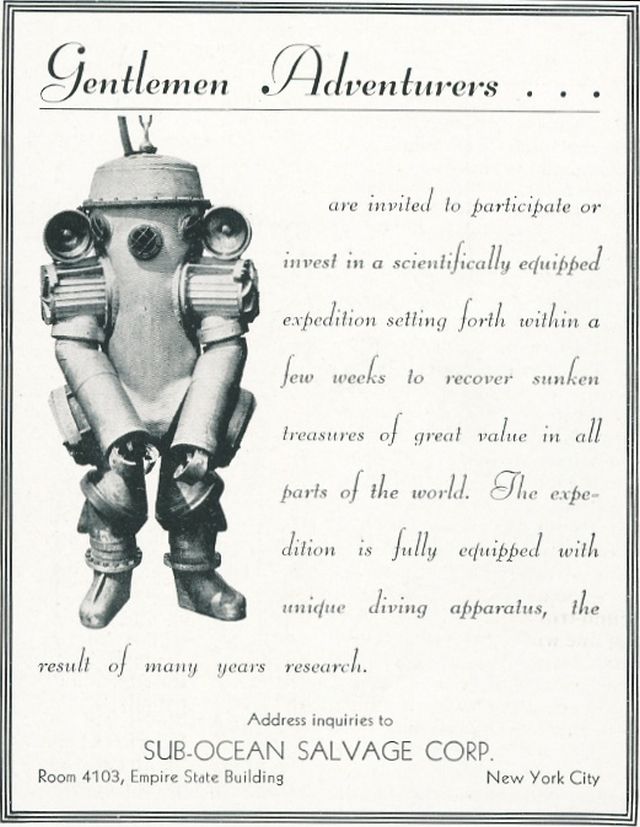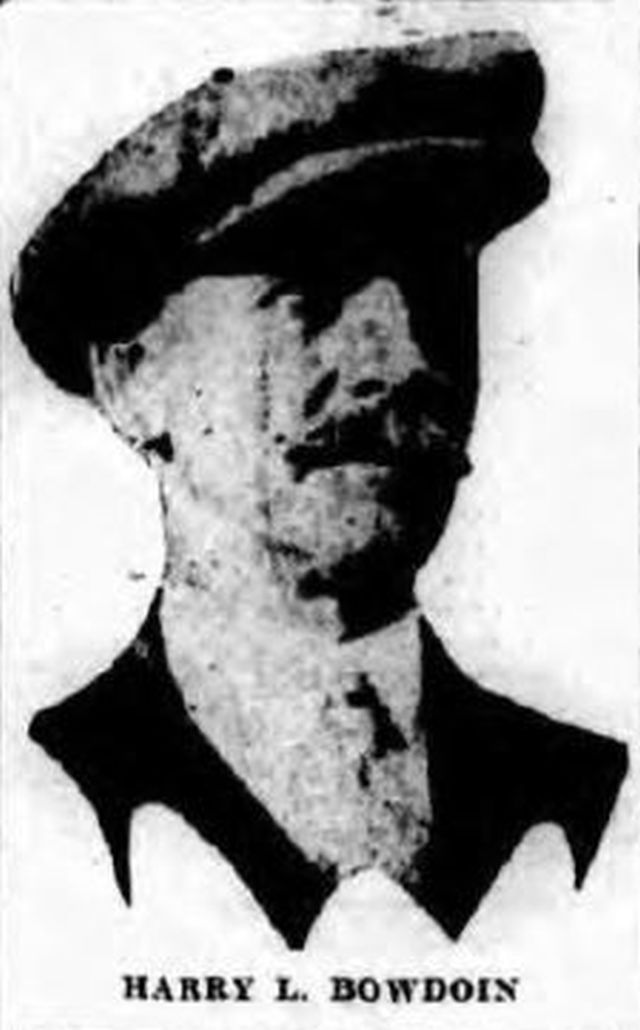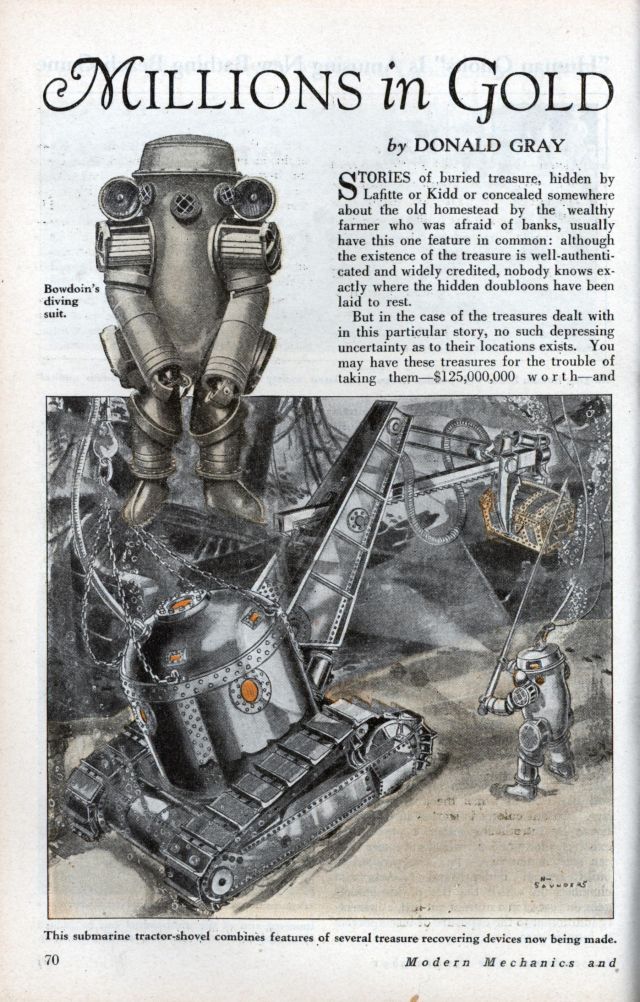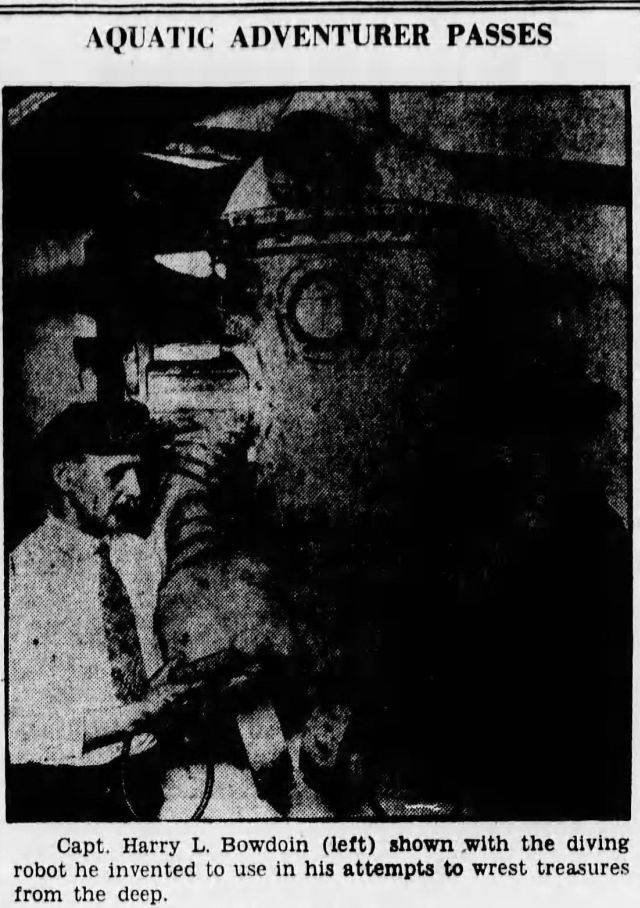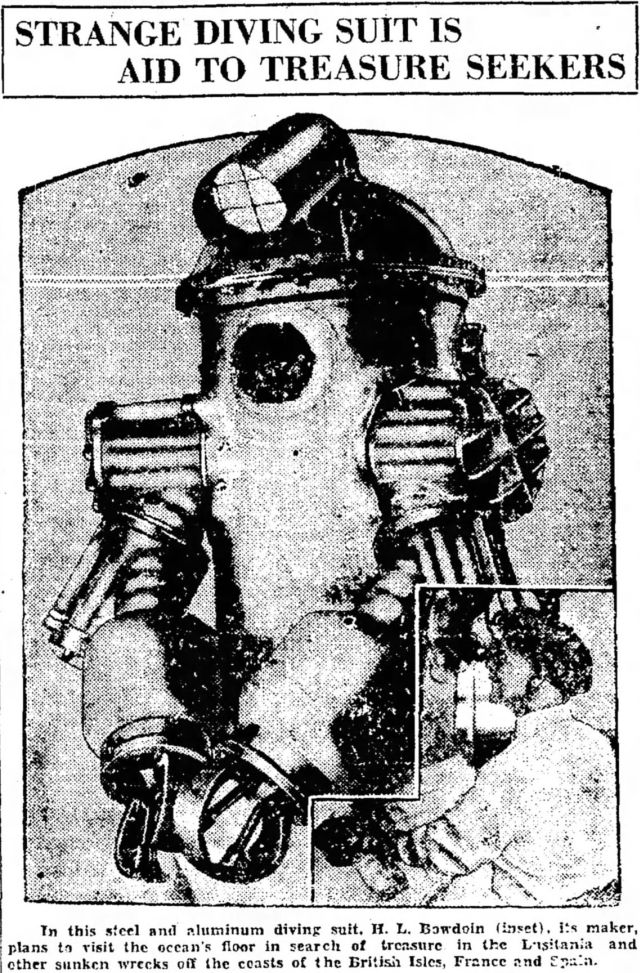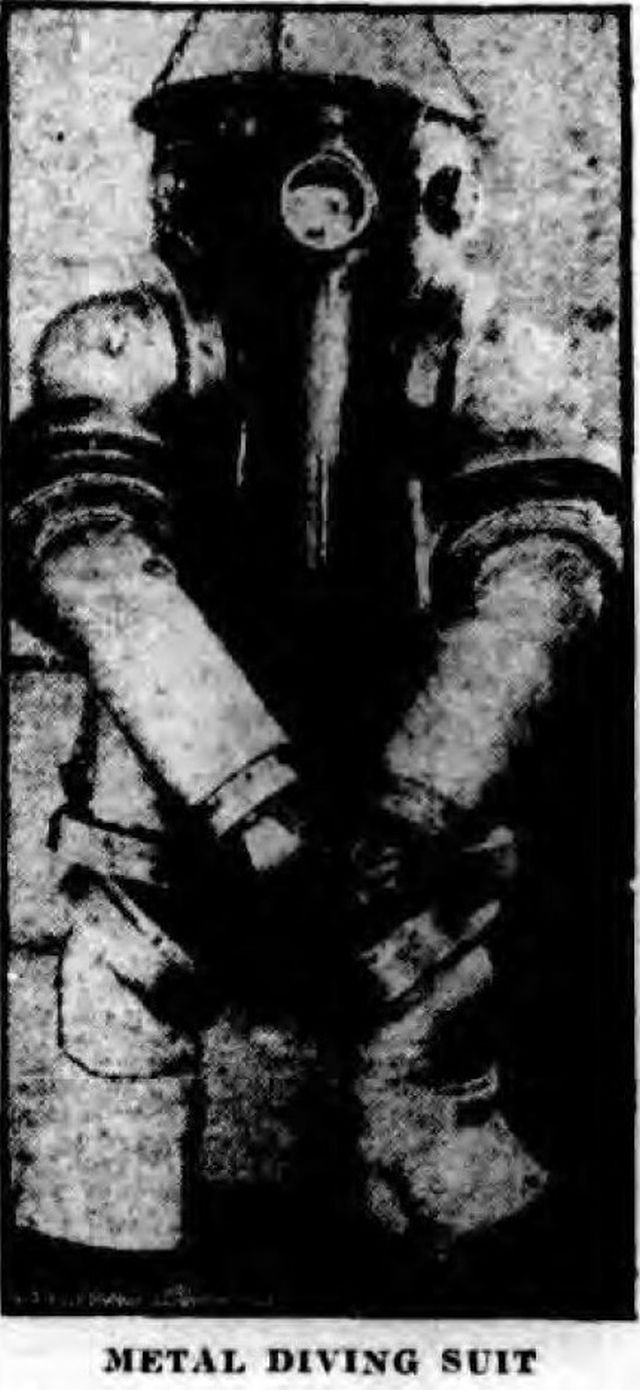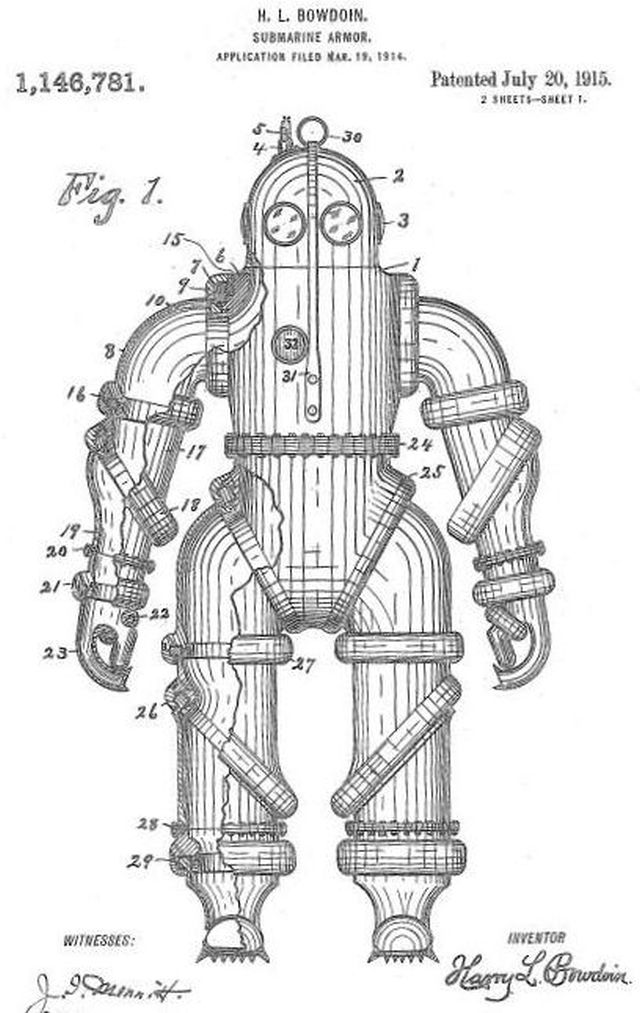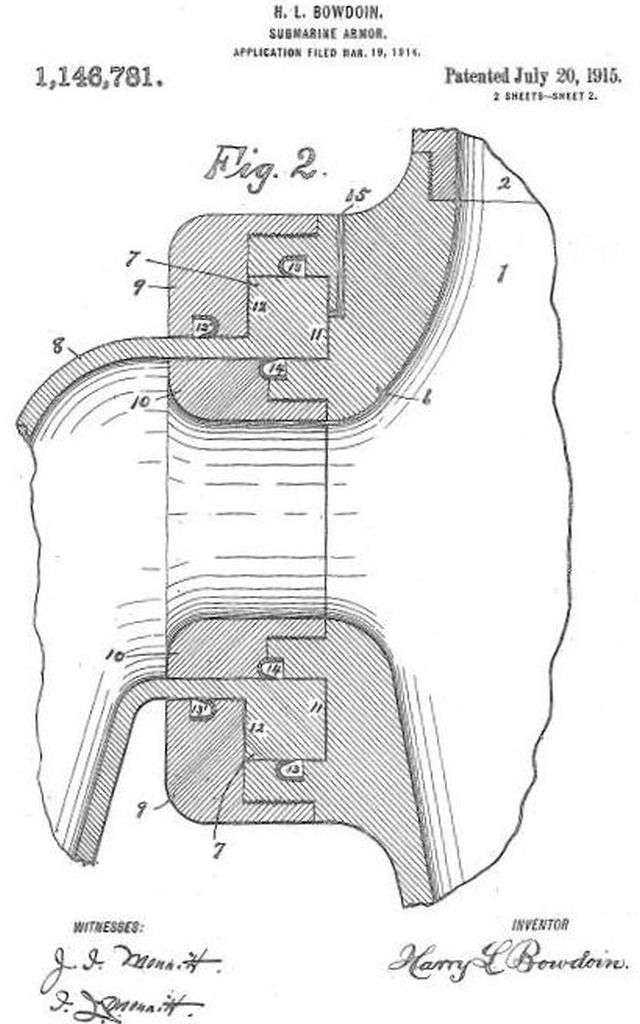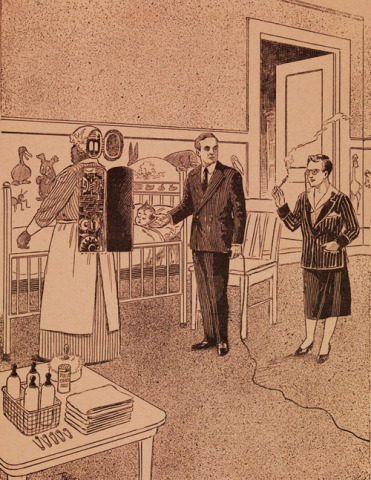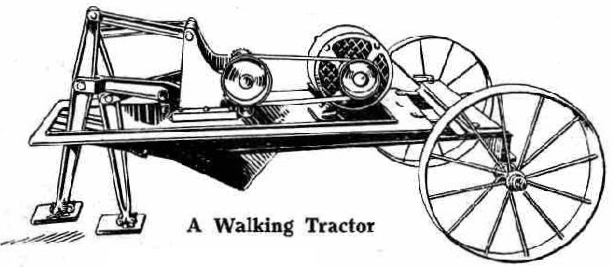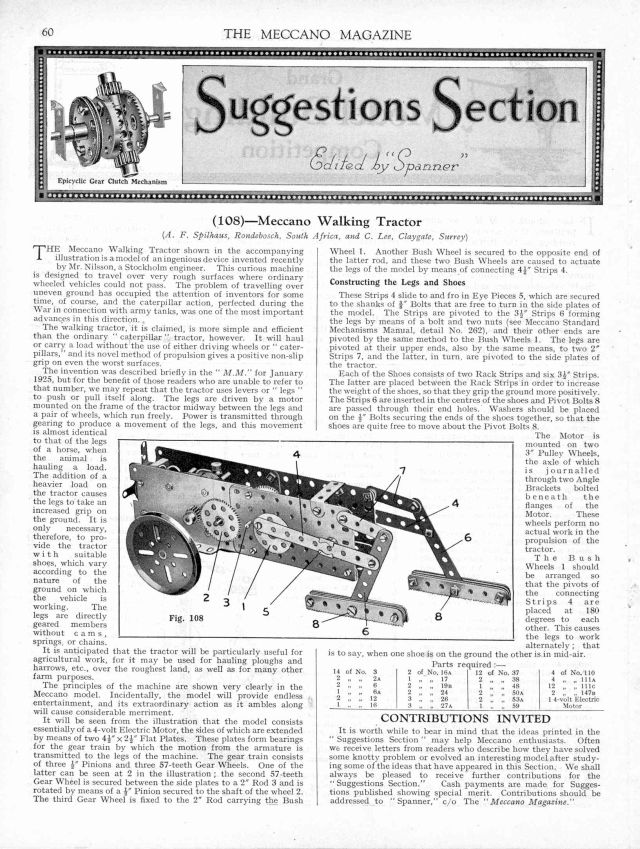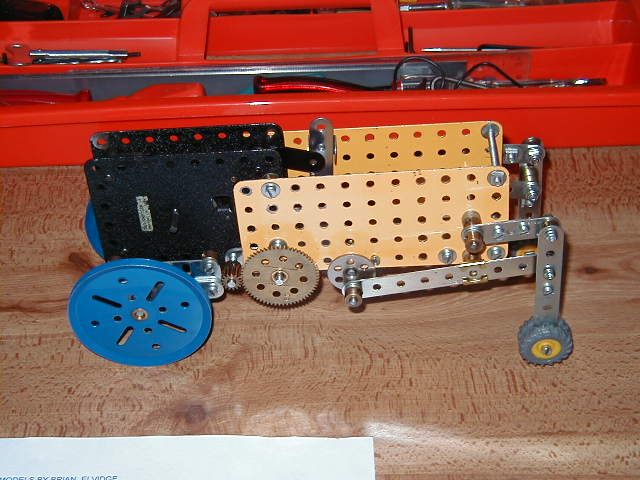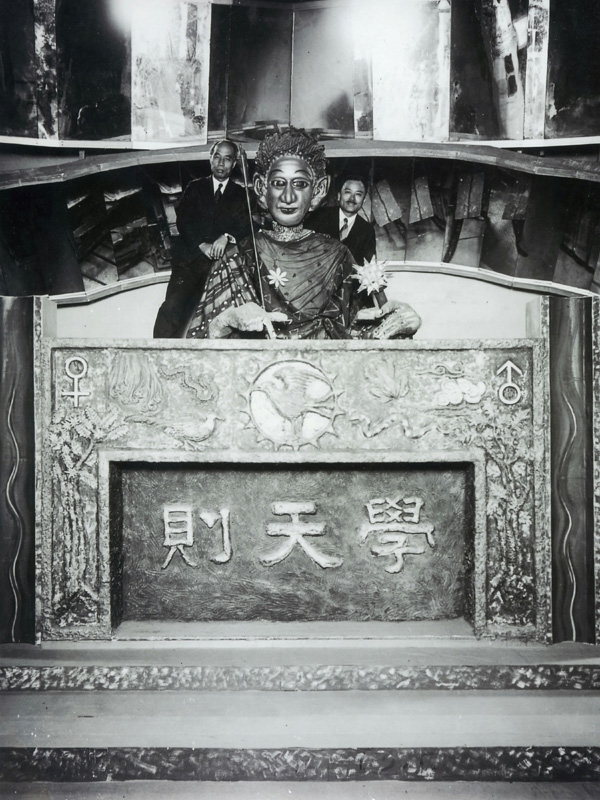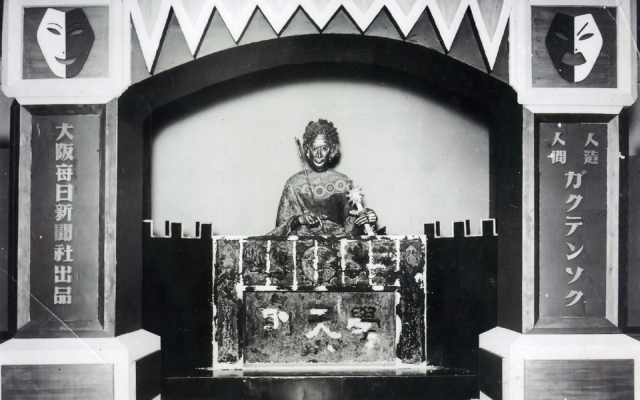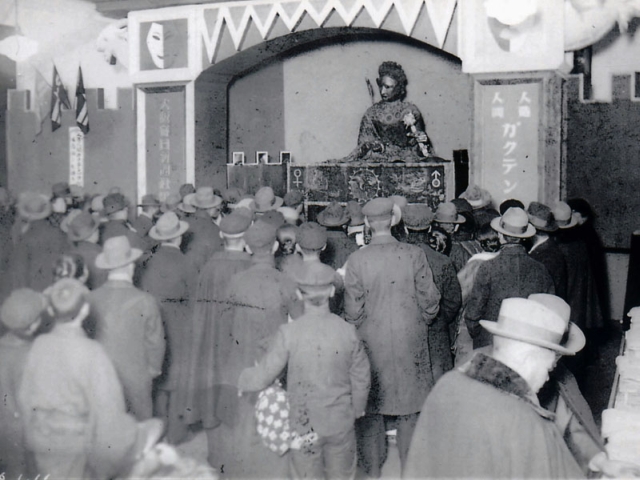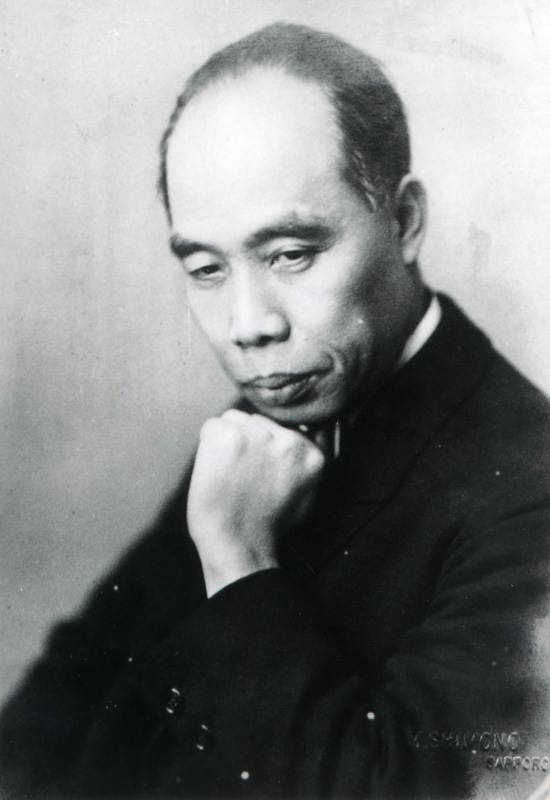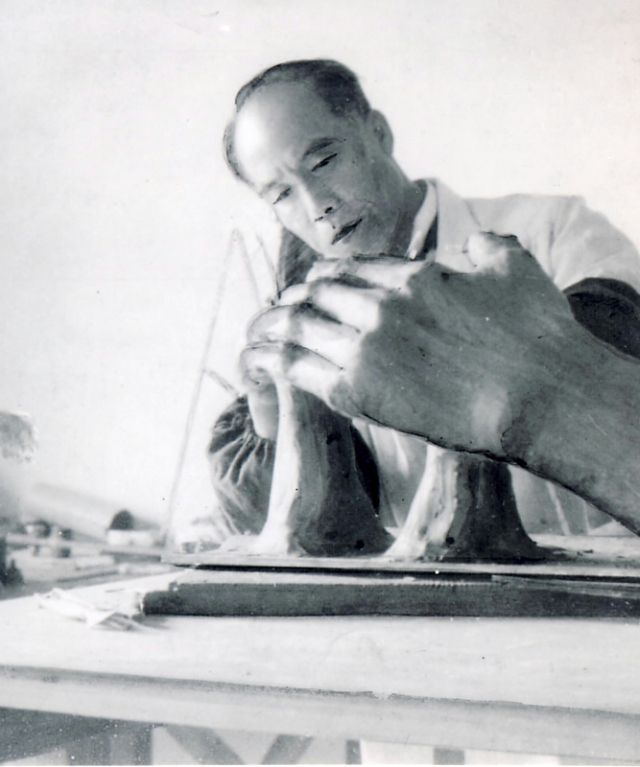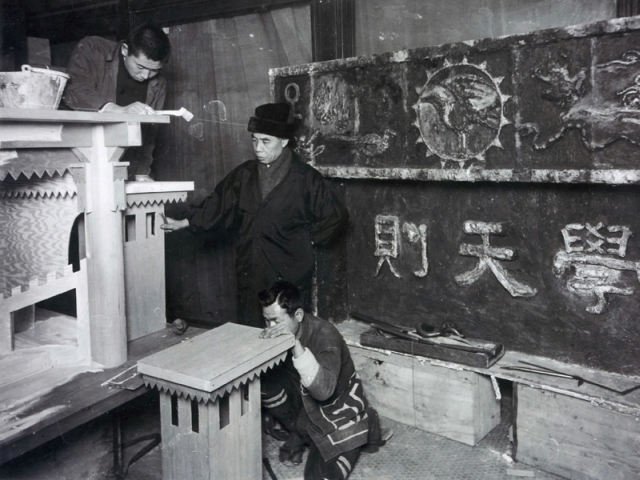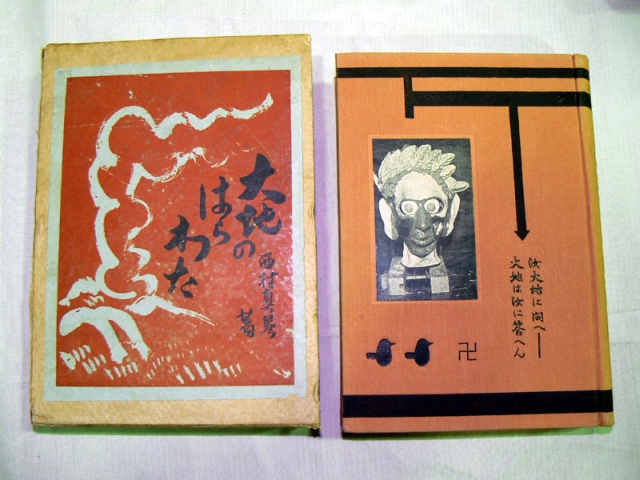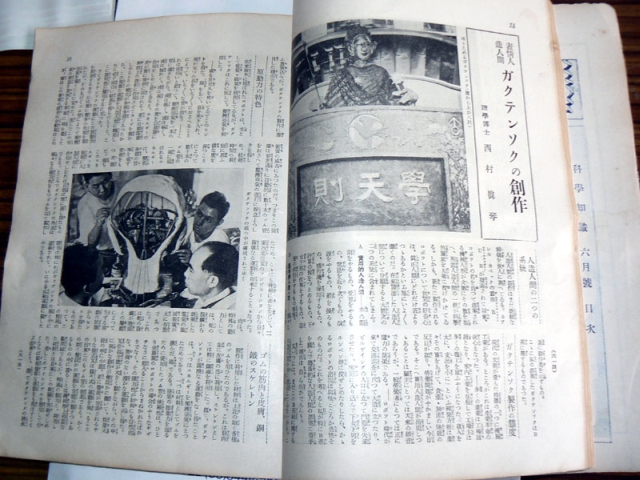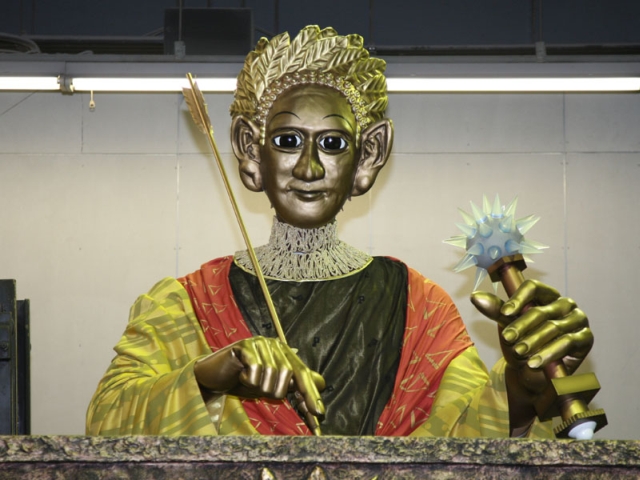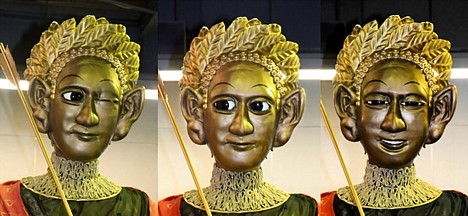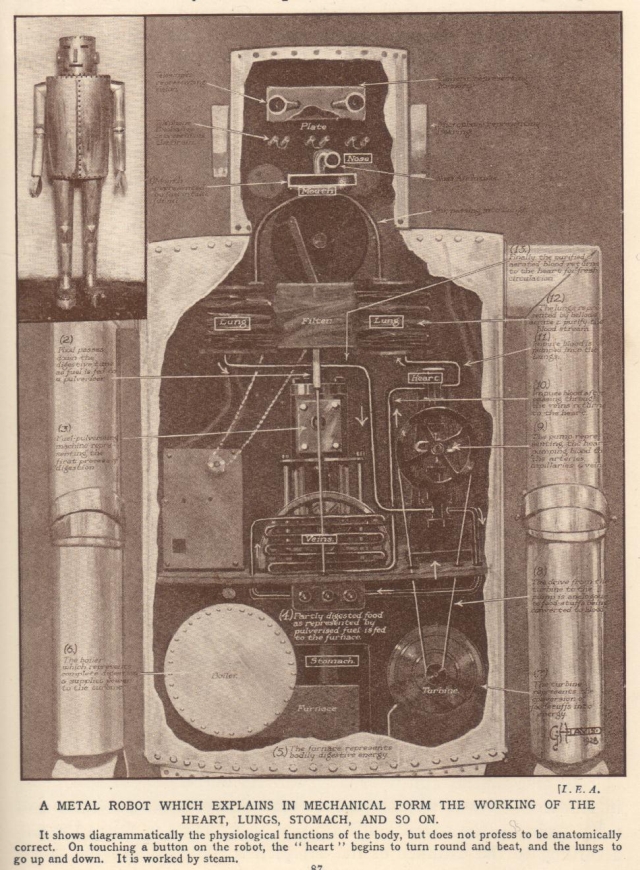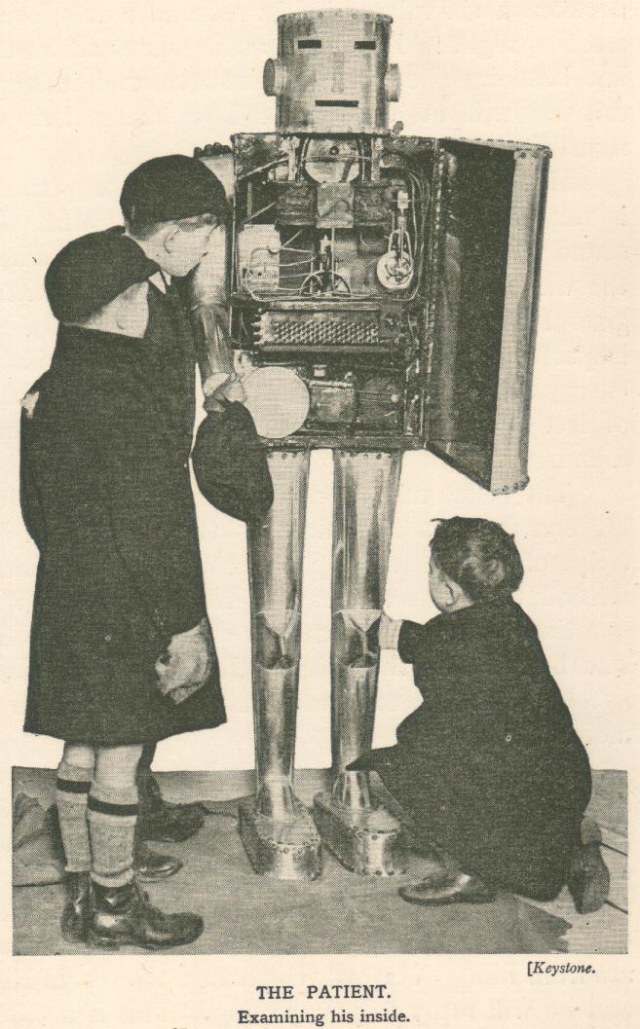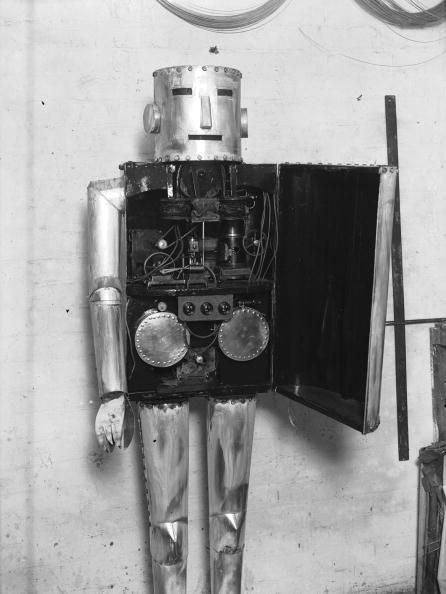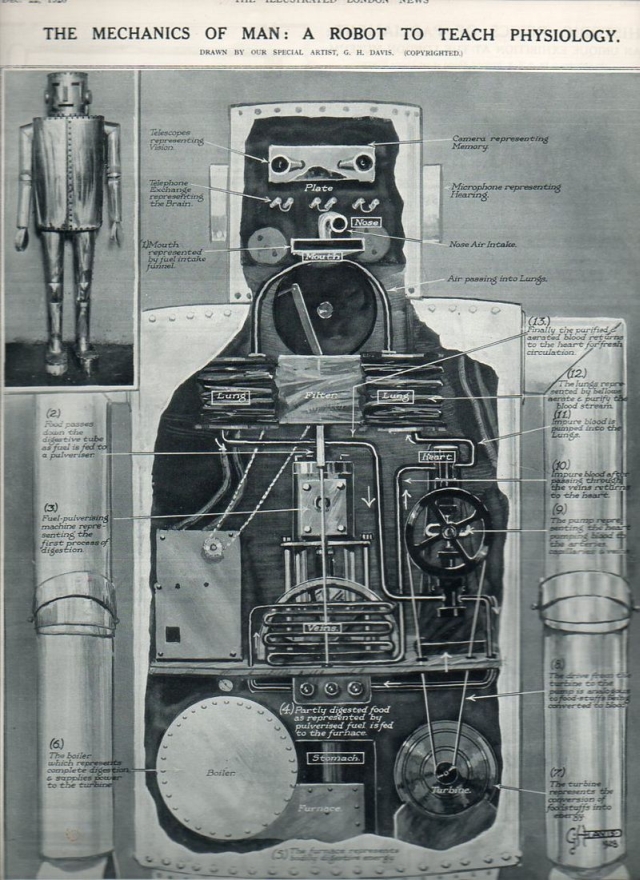1914-28 – Submarine Armor – Harry L. Bowdoin (American)
The 1931 version of Harry L. Bowdoin's Submarine Armor.
When inside his suit Mr. Bowdoin through the manipulation of gears and levers, can move his arms, legs and body freely to almost any angle and with clawed hands, so constructed as to record sensitivity, he can pick up even very small objects.
1928 – Submarine Armor by Harry L. Bowdoin. Source: Popular Science August 1928.
Image source: Popular Mechanics, January 1931.
Harry L. Bowdoin filed his Submarine Armor patent in 1914 and it was granted in 1915. In April, 1918, Mr. Bowdoin completed his invention and in the Spring and Summer of that year subjected tests before groups of marine engineers and naval experts. In deep sea tests. Mr. Bowdoin's metal diving suit was lowered, without any occupant, to depths of 400 feet off the Jersey coast and withstood the pressure perfectly.
Mr. Bowdoin himself was then lowered 200 feet and walked about on a sea ledge at that depth for forty-five minutes.
Availing himself of the latest lighting devices for deep sea work, he has a special lamp, produced by the Westinghouse Company of Pittsburgh, installed in his diving helmet over his head.
This enables him to see clearly for twenty-five feet about him.
Source: Modern Mechanics and Inventions, September 1931.
Bowdoin passed away in 1935. This image from his obituary in The Brooklyn Daily Eagle, Aug 23, 1935.
The last version of Bowdoin's Suit – note the elbow mods and grippers. The lamp is now singular and overhead.
Source: The Capital Times, Aug 20, 1928.
Bowdoin's Submarine Armor (above) appearing more like that in the 1914/15 patent (below). Image source: DAILY STAR, LONG ISLAND CITY, QUEENS BOROUGH, N. Y., MONDAY EVENING, MARCH 30. 1931.
Patent Information:
Publication number US1146781 A
Publication type Grant
Publication date Jul 20, 1915
Filing date Mar 19, 1914
Priority date Mar 19, 1914
Inventors Harry L Bowdoin
Original Assignee Harry L Bowdoin
DAILY STAR, LONG ISLAND CITY, QUEENS BOROUGH, N. Y., MONDAY EVENING, MARCH 30. 1931.
Inventor in Diving 'Armor' to Defy Neptune; Whitestone Man Prepares for Expedition To Wrest Golden Hoard From Davy Jones
Warren(sic.) L. Bowdoin Will Seek Sunken Treasure on Sea Floor.
Sunken treasure—Spanish gold and chests of Jewels hidden away in some scuttled galleon down in the cool, green depths of the sea—the age old quest for sunken treasure is luring Harry L. Bowdoin of Whitestone.
Mr. Bowdoin, whose invention of metal diving suits and tanks for the exploration of the deep sea caves and the hulks of sunken ships led to his organisation of an expedition to salvage some of the more notable treasure troves in Davy Jones' locker, hopes to sail off some bright May morning soon on the most ambitious treasure hunt ever undertaken.
Mr. Bowdoln will go down into Davy Jones' grisly locker in a huge, grotesque, gleaming metal diving suit that will probably frighten old Davy into yielding up his golden hoard.
His diving suit and apparatus is designed to enable him to descend to depths never before reached by divers and, further, to enable him remain below on the sea floor and prowl about at ease for longer periods than has ever, heretofore, been regarded as safe, or even possible.
Dream of 14 Years.
For fourteen years Mr. Bowdoin has labored to create and perfect just such an all-metal diving suit, or tank, which will permit man to explore at ease the vast depths of the oceans more than 200 feet beneath the waves.
In April, 1918, Mr. Bowdoin completed his invention and in the Spring and Summer of that year subjected it to the severest and most spectacular of tests before groups of marine engineers and naval experts.
In deep sea tests. Mr. Bowdoin's metal diving suit was lowered, without any occupant, to depths of 400 feet off the Jersey coast and withstood the pressure perfectly.
Mr. Bowdoin himself was then lowered 200 feet and walked about on a sea ledge at that depth for forty-five minutes, examining the flora and fauna of the deep and keeping in constant telephonic communication with men aboard the Merritt Chapman and Scott Wrecking Company's tug from which he was lowered.
Light Under Sea.
Darkness, until now the diver's chief handicap has been overcome by Mr. Bowdoin. Availing himself of the latest lighting devices for deep sea work, he has a special lamp, produced by the Westinghouse Company of Pittsburgh, installed in his diving helmet over his head.
This enables him to see clearly for twenty-five feet about him. For the treasure hunt Mr. Bowdoin will use floodlights.
When inside his suit Mr. Bowdoin through the manipulation of gears and levers, can move his arms, legs and body freely to almost any angle and with clawed hands, so constructed as to record sensitivity, he can pick up even very small objects.
Mr. Bowdoin labored over his invention in a little workshop opening off a dance hall down on the Whitestone shorefront.
Recently the Sub-ocean Salvage Corporation, which he has formed to carry out his plans, acquired the cable ship "Telegraph," and he removed his laboratory and shop on board the vessel, renamed it the "Salvor" and anchored off Whitestone Landing.
In addition to his diving suit. Mr. Bowdoin has built a four-ton, eight-foot-high pressure-proof observation tank. Completed and tested in June, 1929, this will be used for preliminary sub-ocean inspection and for heavy work at the scene of wrecks.
Two men in the tank, amply provided with fresh air, light and power can operate an exterior boom crane and grappling bucket to extricate large and heavy objects from wrecks, and remove boulders.
Mr. Bowdoin has further perfected his invention and reports that he has remained below on extensive exploration for two and a half hours.
Astor Interested.
The inventor's plan to retrieve from their ocean caches the millions in buried treasure lost in marine disasters, as well as to study sea life at depths never before penetrated by man, has won the support of several men of wealth and position. Among them are W. Vincent Astor, Captain I. J. Merritt, T. Morrison Carnegie and Sydney B. Wertheimer. These and many others have subscribed to the stock issued
by Mr. Bowdoin's corporation to finance his preparations and the expedition.
More money is neded, Mr. Bowdoin said, and with an additional $50,000 to $100,000 to be realized between now and May, he hopes to collect the "Salvor's" crew and cry, "Anchors a-weight" this Spring.
Confident of the success of his venture, Mr. Bowdoin insisted on undertaking his own expedition and with luck and fair weather ahead, the prospector of '31 Will seek his Eldorado first off the Virginia Capes, where the Ward liner "Merida," sunk in May, 1911, lies many fathoms deep with a cargo of $5,000,000 in gold and jewels in her holds.
Repeated efforts have been made to salvage Merida's treasure, but owing to the inadequate apparatus employed, these ventures have all proven futile.
To Seek Sunken Gold.
Following this salvage assignment, Mr. Bowdoin hopes to delve for the millions of dollars in gold bars sunk with the S. S. Egypt in the Biscay during the World War.
After he has tried his fortunes on these two ventures Mr. Bowdoin says he will attempt to locate some of the more than $20,000,000 in bullion loot with ships in the English Channel, according to insurance reports.
Other hoards of famous wealth await the doughty salvager. The storied Spanish main holds, it is said, millions of dollars in treasure locked in the holds of the old Spanish galleons.
Legend has it also that more than $80,000,000 in treasure lost in antiquity lies buried in the fabled
Aegean Sea off the Greek coasts.
Deep sea treasure hunting as a relief from the prosaic problems of everyday existence has caught the imagination of Harry Bowdoin, and Father Neptune may look to his treasures.
See also Bowdoin's Underwater Tank from 1929 here (not yet published).
See other early Underwater Robots here.
